How to grow a Venus flytrap from seeds?
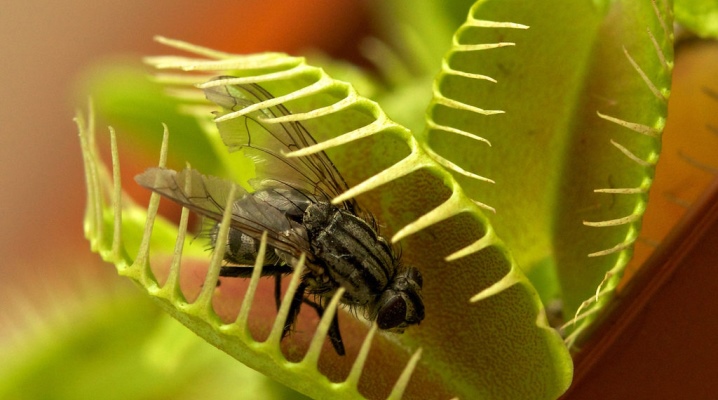
Plants in the form we are accustomed to are no longer surprising, but this does not apply to predatory specimens. Such a unique creation of nature, like the Venus flytrap, can interest everyone. Let's consider the process of growing this unusual flower from seeds in more detail.
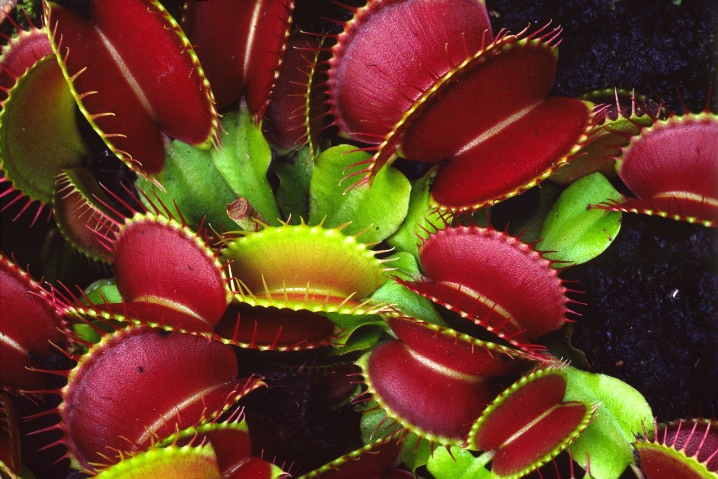
Description
"Dionea" is scientifically called muscipula, which means "mousetrap" in Latin. It is believed that the scientists who first saw and described this plant gave it an erroneous name. In Russia, this interesting creature received the beautiful name "Venus flytrap", given in honor of the Roman goddess of love and plants. The lifespan of this flower can be up to 30 years, and all these years it looks very impressive and unusual.
On a short stem, there are no more than 7 leaves ranging in size from 3 to 7 cm, collected in a bunch. In nature, this flower grows in swamps with low nitrogen levels in the soil. This lack of the specified substance is compensated by eating nitrogen-containing insects. To hunt them, the plant has leaves - traps.
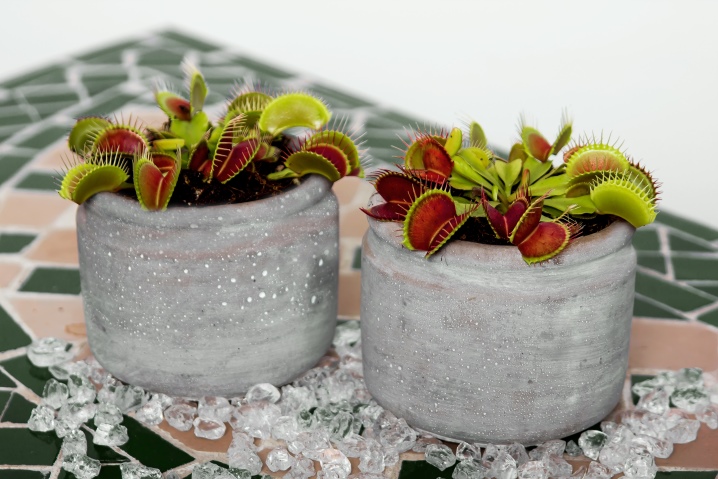
After flowering, they begin to appear on short stems. The trap is greenish on the outside and reddish on the inside. It resembles a "trap" formed from two leaves. On the edges there are small hairs that resemble teeth. They allow you to close the trap more tightly when triggered, so that prey cannot get out. Inside the trap there are special glands that produce sap, which attracts prey.
The victim goes into a trap to collect this juice. At this time, the smallest hairs feel the presence of prey, and the trap immediately closes. After the complete closure of the "trap" turns into a kind of stomach and begins to digest the victim. After a week of digestion, the trap opens again, and it is already ready for a new hunt. This cycle continues several times, after which the trap dies off.
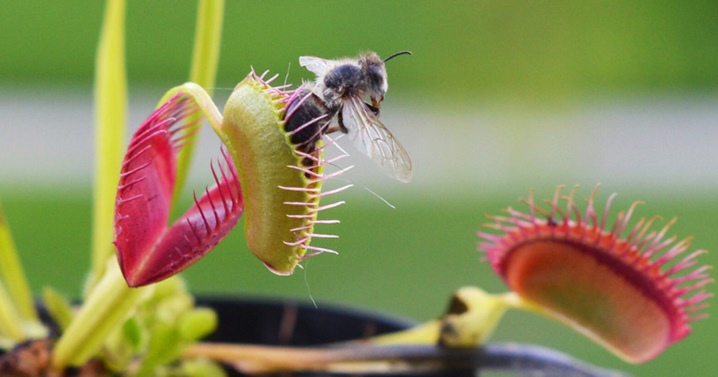
At home, most often it is possible to grow a Venus flytrap precisely by germinating seeds, but this is not the only way to reproduce this plant. Breeders managed to breed this flower by:
- dividing bushes;
- shoots;
- bulbs.


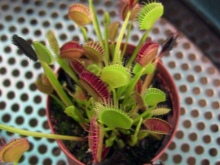
The bush takes root after the formation of its root system. Until this happens, small shoots without traps can be detached from the main bush and transplanted. The same thing happens with the bulbs, only they are buried by ¾ so that nothing interferes with the sprouts.
It is worth noting that these processes are very similar, and they all require very careful handling of the roots.
Collection and preparation of seeds
Considering the peculiarities of this plant and its rarity in the collections of flower growers in our country, the best way of growing will be seed. You can buy seed in many online stores or directly from breeders.
The described culture begins to bloom in spring or early summer. On long peduncles, beautiful white flowers are formed.
The flowering process is very energy intensive for the plant, and these flowers should only be left if there is a need to collect the seeds.
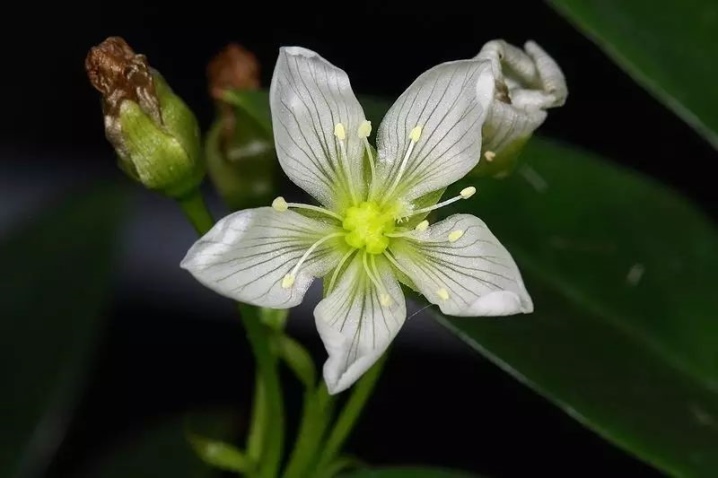
This flower will not be able to pollinate at home, and in this it needs help:
- after opening the flower, you will need to take a small brush with soft hair;
- collect pollen from the selected flower into tassels;
- transfer the collected material to the pistil of another flower as carefully as possible;
- such pollination must be done with each flower.
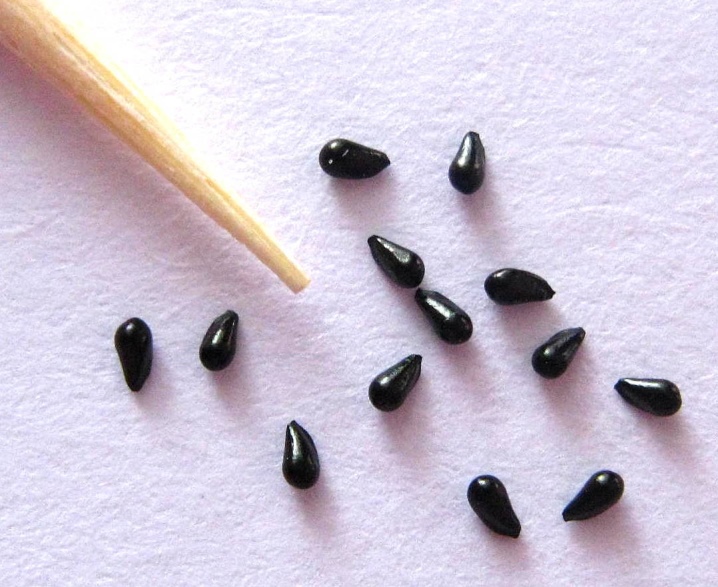
After successful pollination, the first seeds may begin to appear after about 1 month. The fruits of the Venus flytrap, or "Dionea", are racemose. Inside one ovary there can be from 10 to 25 black seeds. They ripen even after being harvested from the plant. It is necessary to plant correctly no earlier than 3-4 months after the pollination process.
Even if you use purchased seeds, before sowing, they must be stratified or, more simply, "activated"... To do this, they must be spread out on a rag or cotton pad moistened with a 1% solution of potassium permanganate. Next, you need to remove them for 8 weeks in a dark place with a constant temperature of 3 to 6 ° C.
For these purposes, a refrigerator is well suited. Just not the freezer - there the seeds will freeze and die.
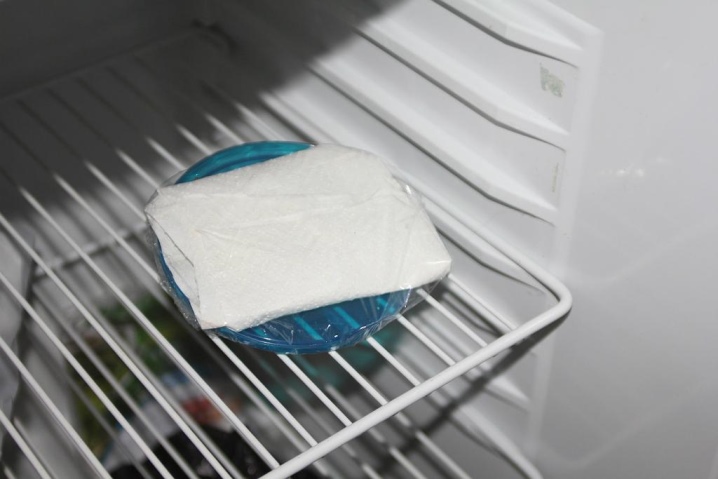
Germination rules
The best time to sow seeds is February. This period was not chosen by chance, since the seeds planted at this time will have time to get stronger by the beginning of summer, and they can be transplanted into separate pots.
It is quite difficult to grow a predatory flower at home from a seed to a full-fledged flower, but if you responsibly approach this issue, know certain rules, this task will become much easier. For planting, select a low pot with a capacious tray for frequent watering.
It is advisable to choose containers made of transparent materials; you can use an aquarium to achieve a greenhouse effect.

You need to plant seeds correctly like this:
- on the bottom of the pot you need to put a substrate or sphagnum moss and spill it well with water;
- the seeds just need to be spread out on the surface, and not buried in the ground, then cover the pot with transparent material or glass;
- place the container with seeds in a well-lit place - for sprouts to appear, a temperature of at least + 24 ° C is required.
If all the conditions are met, then the first leaves will appear in 14-40 days. The speed of their appearance depends on external factors and the quality of the soil. During the entire germination period, it is necessary to ventilate the soil, regularly water it through the pan, and you will also need to spray the plant to increase the moisture level.
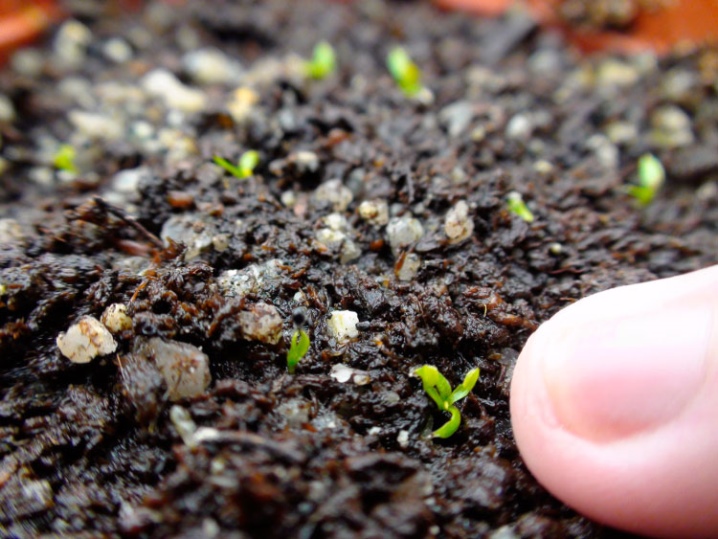
Seedling care
During the care of the described plant, even experienced florists have certain problems, related to its immediate content.
- Due to excess moisture in the soil, dark spots may appear on the shoots, which indicates that they are rotting. If the irrigation regime is not urgently adjusted, the fungus will develop, and the flower may die.
- For irrigation, do not use ordinary tap water and fertilizers with a high level of minerals for ornamental plants. Otherwise, wilting of leaves and gradual death of the plant will begin.
- It is undesirable to touch the trap itself with your hands, overfeed the flower and try to feed it with food.
- Continuous exposure to direct sunlight may cause dark spots. They can only be removed by adjusting the light intensity.
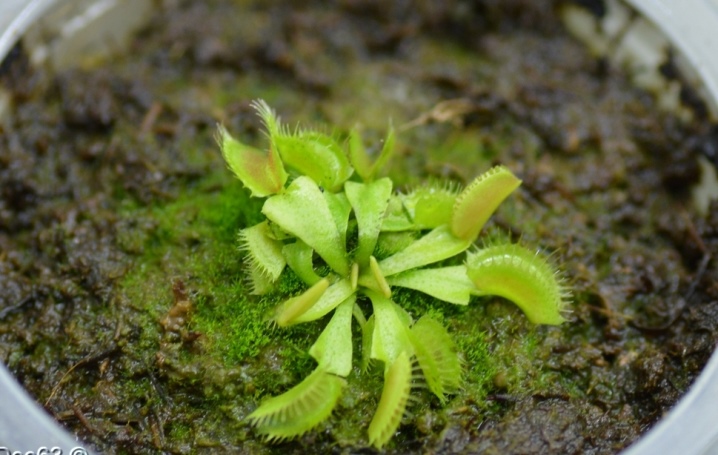
Before the beginning of the dormant period, the leaves may turn yellow or turn white. Since this flower hibernates at temperatures from +2 to + 10 ° C, it is problematic to create such conditions in an apartment. The way out of this situation will be loose (you can make several holes in the bag for air circulation), wrap the flower in a plastic bag and put it in the lower compartment of the refrigerator in a place for fruits, where the temperature is slightly higher than in the rest of the space and is kept at + 5 ° WITH. But do not forget about it, periodically it is necessary to check the soil and keep it in a slightly damp state. You should not worry about lighting, since the plant does not need it for a dormant period.
After a successful wintering, the described plant must again be adapted to warmth. When the daytime temperature on the balcony reaches from +5 to + 10 ° C, the flycatcher can be sent to fresh air. But be careful and watch the temperature. If frost is expected overnight, put the plant back in the refrigerator or it will freeze. "Dionea" moves away from wintering very slowly. After the refrigerator, it may seem that she has completely died. Gradually, she will begin to release small leaves. At the end of spring, the growth rate of the leaves increases. When a large number of leaf plates appear, you can start feeding it with insects.
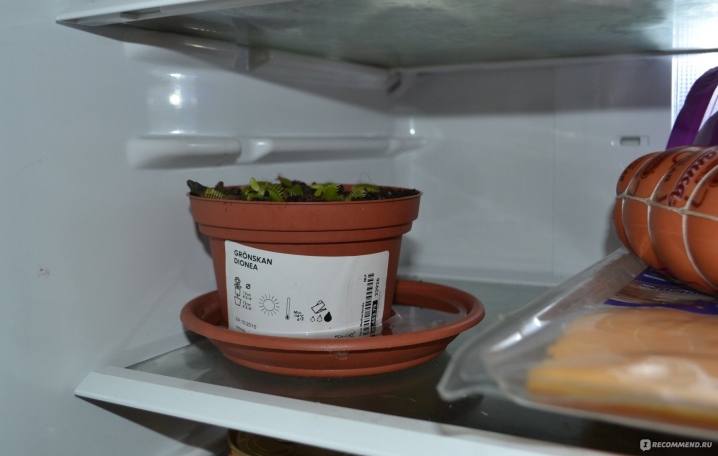
The described plant is very picky about the structure of water. It can only be watered with distilled water from a pharmacy. It can also be obtained from the moonshine still.
Never use tap liquid in any form - standing, boiled, or frozen will not work.

This plant is very fond of a humid climate, so it is advisable that it always have a little water in its pan. It can be placed in an aquarium to create a more comfortable environment.
You will learn more about planting the Venus flytrap with seeds.































The comment was sent successfully.